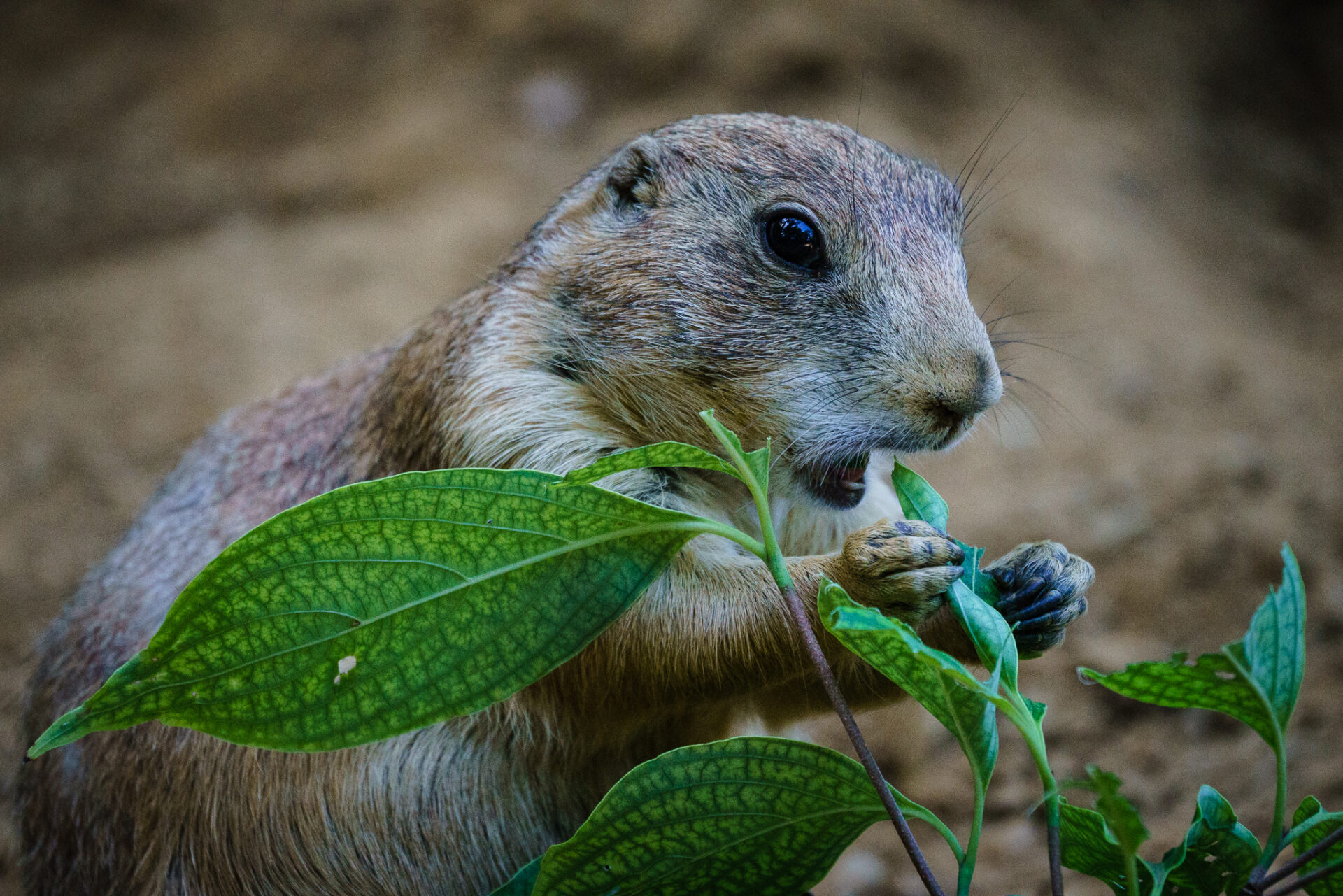I was disappointed at first when I meandered through the National Zoo this Sunday. Many of the animals weren’t out in their public enclosures, and the ones who were took “lazy Sunday” to heart. The prairie dogs were a delightful exception, though, scampering around their pen and chomping through seemingly any plant material they could find.
I took with me my Sony A7R II, of course, and the Sony FE 70-300 telephoto lens that was released earlier this year.
When I got my Sony A7R II, I understood its relative strength in capturing landscapes and architecture, and its relative weakness in capturing action and wildlife. I do love going to the zoo and shooting animals, if you’ll pardon the terrible pun, so I did have some concern what I might be giving up vis-a-vis the Nikon D810 when I switched to Sony mirrorless. But this weekend at the zoo, I found the setup pleasing to use.

I don’t think you can eat that. 


One of the prairie dogs is obviously saying to the other, “Hail Hydra.” Not even the National Zoo is safe from Hydra’s nefarious grasp! 

Yes, wildlife is an area of relative weakness for the A7R II. But that doesn’t make it weak for animals in absolute terms. I did not notice focusing problems; my photos were tack sharp, even when I had to contend with moving animals. I did put the camera into APS-C mode (as opposed to the native full frame 35mto get the reach I wanted, but that still left me with 18 megapixels. That’s higher than the D7000 I had a few years ago, and it’s not much lower than the cameras of today that specifically target wildlife and action. With the A7R II in APS-C mode, I never ran into buffer limits. I did keep the camera in single shot mode so as not to sacrifice the dynamic range of my RAW files in burst mode, but the camera felt snappy when I repeatedly pressed the shutter button.
If I were a dedicated wildlife or sports shooter, I would want a Nikon D500 or Canon 7D II. As a landscape and architecture shooter who wants to have fun at the zoo, the Sony A7R II was just fine.
